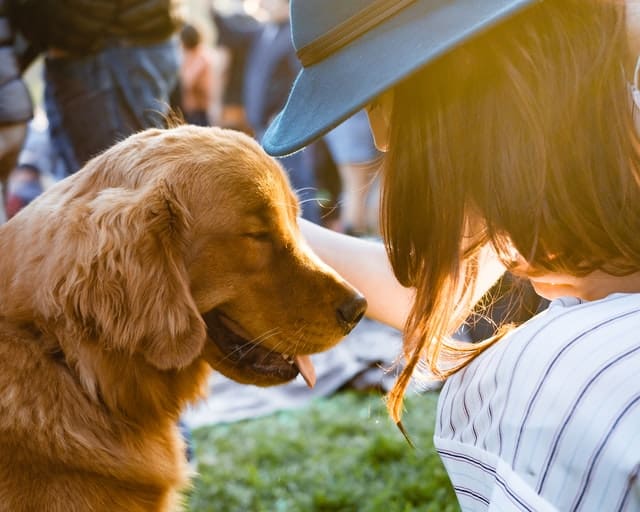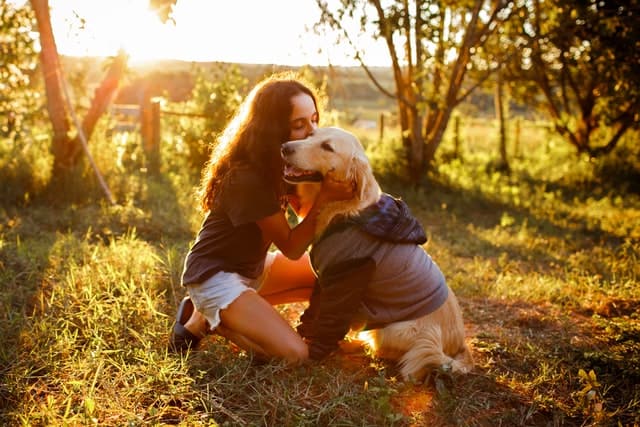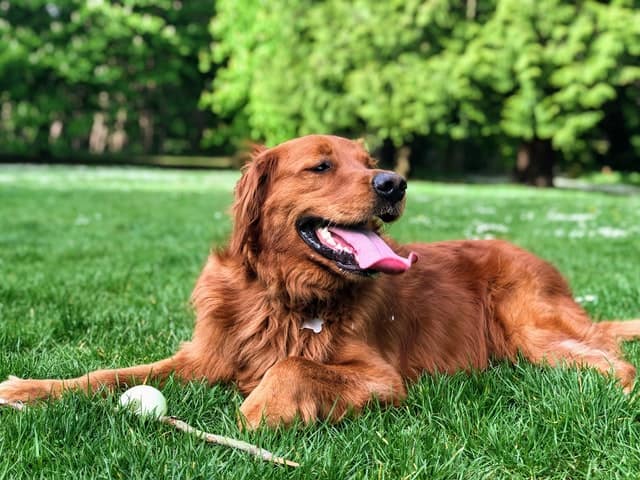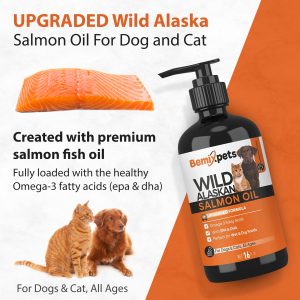Whether your dog has a black spot on his palate, a black tongue, or black gums, you may be wondering where those black colours come from. You may have heard that dogs with a black palate are much more intelligent and easier to train.
Contents
Some hunters also believed that dogs with lots of black on the palate were the best hunting dogs, and the more black, the better. Some believe that black spots in a dog's mouth (or any black areas in the mouth) suggest a purebred dog. How accurate are these statements?
Several dog breeds worldwide have black mouths, but it turns out that a dark mouth is not necessarily a sign of a purebred dog or a brilliant dog with excellent cognitive abilities. Nor does it necessarily indicate a dog with excellent hunting skills.
Black pigment may be expected, but sometimes it signals a medical problem

It's important to remember that these black spots may not be regular at all in some cases and may warrant a visit to the vet. In this article, we'll take a look at some of the dog breeds known for having black in their mouths and some of the causes of black muzzle spots - and while we're at it, we'll also debunk some common myths about these black spots on a dog's muzzle, tongue, gums, and palate.
What causes black spots in a dog's muzzle?
What causes black spots in your dog's mouth? It's probably the result of heavy pigmentation. These darker spots result from microscopic melanin granules and appear as flat, pigmented areas located on the tongue, gums, and inside the lips and muzzle of the dog. As long as these areas are flat and don't protrude above surrounding tissue, they are normal and nothing to worry about, explains Karen Becker, author, and veterinarian at Natural Pet Animal Hospital in Bourbonnais, Illinois.
By comparison, consider that these areas of extra pigmentation are a bit like freckles or moles in humans. These random spots can be found on the tongues of many other breeds. In fact, there are more than 30 dog breeds known to sport spotted tongues; however, consider that even mixed breeds can have black spots on their muzzle.
When should I seek veterinary help?

Dogs with highly pigmented skin and muzzle have an increased predisposition to developing oral melanoma, explains Robyn Elmslie, an oncology veterinarian practising for Veterinarians in Englewood, Colorado.
Even if your dog belongs to a breed for which muzzle pigmentation is normal, it is good to look out for any abnormalities. Visit your vet if you notice dark, pigmented areas in your dog's mouth that look raised rather than flat. In some cases, these black areas may require veterinary care.
What happens if the gums turn bluish?

It is also essential to consider that the sudden appearance of bluish gums or a purple-coloured tongue in a dog whose gums and tongue usually are pink requires an immediate visit to the vet, as this could signal a heart, circulatory, or other severe disorder.
Black spots on your Golden Retriever's tongue are perfectly normal. However, there are times when black spots on your dog's tongue cause concern.
Why do some golden retrievers have a black spot on their tongue?

Dark, discoloured spots on your Golden Retriever's tongue come from discolouration of the language. These excess melanin deposits cause dark spots on your Golden Retriever's tongue and are harmless markings. It is so common that it usually occurs in thirty different dogs and other animal breeds.
These dark spots usually do not indicate a health problem, but some health problems can cause them in some cases.
Possible oral diseases that dogs are susceptible to are a great way to ease your dog's suffering, as you will be able to quickly identify their symptoms and act accordingly. Here are some oral diseases that are common in dogs:
Stains on your dog's tongue that have been there since he was a puppy are nothing to worry about. An excellent way to monitor any changes in the spots on your dog's tongue or to check for new ones is to brush regularly. Good dental care is critical to your pet's overall health, so grab some treats and teach them to accept daily teeth brushing. It is easier to find and treat any medical problem in the early stages. Never hesitate to have your vet examine suspicious spots or lumps on your pet's tongue, mouth, or body.
The blue-black tongue characteristic of Chow and Shar-Pei is shared by only a few other animals - polar bears, giraffes, and several breeds of cattle. Scientists have no idea where Chow's blue-black tongue comes from and can't explain why some animals have a dark language. They know that black spots on a dog's tongue do not mean it is not a breed, nor does it mean it must have some Chow in its DNA. It shows the individuality of your four-legged friend that sets him apart from all other dogs.
Can they become a problem?

These spots are usually very regular and pose no threat to your pup. If you notice that the hue has changed drastically or the texture looks different from usual, it would be wise to talk to your vet to understand what is happening.
There are two oral conditions to watch out for known as canine melanoma and squamous cell carcinoma. The conditions will appear as patches on your dog's skin and mask themselves as fleshy pigmented spots in your dog's mouth.
To reduce your dog's chances of dealing with these conditions, it is best to brush his teeth daily. This can help in the early diagnosis of any of them. If your dog's tongue spots are anything other than the normal blue-black, it may indicate some medical problem that you are unaware of. This doubles if you notice that the spots have started to "lift" and appear larger than they originally were
What oral diseases should you look out for?

Remember to routinely check your dog's mouth to ensure he is not suffering from any of the diseases below. We've briefly discussed some of the conditions they're susceptible to in the headline above, but they can easily sneak up on your dog.
Mouth inflammation in dogs
This condition results from inflammation of the oral mucosa. You will be able to spot this if you notice that your dog's gums are swelling or if large sores appear around the teeth.
This is a common problem for greyhounds, although it occurs in many other breeds such as huskies and Maltese. Canine stomatitis is the "kissing condition" because ulcers often form where the lips meet the teeth.
Dermatitis on the lips
These conditions cause chronic dermatitis, common in dog breeds with droopy lips. Species such as St. Bernards and English Bulldogs have this problem the most.
This can worsen the dog's oral hygiene, and there can be a buildup of bacteria from saliva. This can worsen drooping and give off a very unpleasant odour.
Can a dog's gums have black spots?

It is not unusual for dogs of almost any breed to have distinct black spots on their tongue and gums. The texture is more important than colour. If the area is raised or otherwise looks different from the surrounding gum tissue, it could be a sign of trouble.
Why are dogs' mouths black?

Why do dogs have black lips? ... Like eye colour, the darker a dog's mouth and nose, the more melanin their genetic heritage makes available to them. The most common nose/lip colours, from least to most melanin, are Isabella (dusty), liver (brown), blue (grey), and black.
How can you tell if a dog is purebred?
There are no real visual signs of a purebred dog. Although you can compare to the breed standard, some mutts will have the same markings as dogs whose ancestors have been the same breed for generations. A purebred dog will not be "better" than any other dog or give clear signals of breed status.
What colour should the inside of a dog's mouth be?

A verified dog veterinarian answered. The inside of most dogs' mouths is pink. Dogs palate black and. You may have heard that dogs with a black palate are much more innovative and easier to train. Some breeds may have black pigmentation.
When should I seek veterinary care? In some cases, these black areas may require veterinary care. Even if your dog belongs to a breed for which muzzle pigmentation is normal, it is good practice to look out for any abnormalities.
Dogs with highly pigmented skin and muzzle have an increased predisposition to developing oral melanoma, explains Robyn Elmslie, an oncology veterinarian practising for Veterinary Associates in Englewood, Colorado. Visit your vet if you notice dark, pigmented areas in your dog's mouth that look raised rather than flat.
What happens if the gums turn a bluish colour?
You should also consider that the sudden appearance of bluish gums or a purple-coloured tongue in a dog whose gums and tongue are normally pink requires an immediate visit to the vet, as this could signal a heart, circulatory or other serious disorder.




